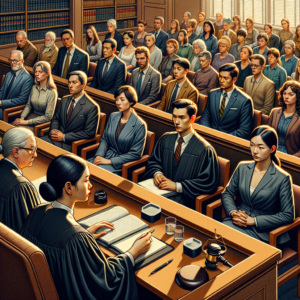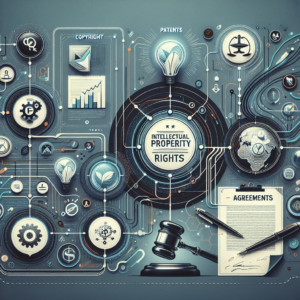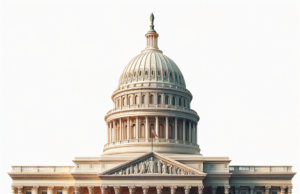Confronting the Crisis: Unveiling the Harsh Reality of Gun Violence
 Gun violence has emerged as a critical public health crisis in the United States, claiming thousands of lives each year and leaving an indelible mark on communities across the nation. As the debate surrounding gun control intensifies, it is essential to confront the harsh realities of this epidemic. This article seeks to unveil the multifaceted nature of gun violence, exploring its scope, societal impact, root causes, policy responses, community initiatives, and the collaborative efforts necessary to combat this pressing issue.
Gun violence has emerged as a critical public health crisis in the United States, claiming thousands of lives each year and leaving an indelible mark on communities across the nation. As the debate surrounding gun control intensifies, it is essential to confront the harsh realities of this epidemic. This article seeks to unveil the multifaceted nature of gun violence, exploring its scope, societal impact, root causes, policy responses, community initiatives, and the collaborative efforts necessary to combat this pressing issue.
Understanding the Scope of Gun Violence: Statistics and Trends in the Modern Era
Gun violence in the United States has reached alarming levels, with the Centers for Disease Control and Prevention (CDC) reporting over 45,000 gun-related deaths in 2020 alone, marking a significant increase from previous years. This figure includes homicides, suicides, and accidental shootings, illustrating the complex nature of the crisis. Furthermore, data from the Gun Violence Archive indicates that there were over 600 mass shootings in 2021, highlighting a disturbing trend of escalating violence. The demographic breakdown reveals that young men, particularly those aged 18 to 24, are disproportionately affected, with communities of color experiencing the highest rates of gun violence. These statistics underscore the urgent need for comprehensive solutions to address this pervasive issue.
The Societal Impact of Gun Violence: Examining Effects on Communities and Families
The ramifications of gun violence extend far beyond the immediate victims, permeating the fabric of communities and families. Survivors often grapple with physical injuries, psychological trauma, and a pervasive sense of insecurity. Families of victims endure profound grief and loss, which can lead to long-term emotional and financial instability. Moreover, communities plagued by gun violence experience a breakdown in social cohesion, as fear and mistrust hinder community engagement and economic development. Schools in high-violence areas face disruptions, affecting students’ educational outcomes and overall well-being. The societal impact of gun violence is a complex web of challenges that necessitates a multifaceted approach to healing and recovery.
Root Causes of Gun Violence: Analyzing Socioeconomic and Psychological Factors
To effectively address gun violence, it is crucial to examine the root causes that contribute to this epidemic. Socioeconomic factors such as poverty, unemployment, and lack of access to education play a significant role in fostering environments where violence can thrive. Communities with limited resources often experience higher rates of crime, including gun violence, as individuals may resort to illegal means for survival. Additionally, psychological factors, including exposure to trauma, mental health issues, and substance abuse, can exacerbate the likelihood of violent behavior. Understanding these underlying issues is essential for developing targeted interventions that address the complexities of gun violence at both individual and community levels.
Policy Responses to Gun Violence: Evaluating Current Legislation and Its Effectiveness
In response to the growing crisis of gun violence, policymakers have implemented a range of legislative measures aimed at curbing the epidemic. Background checks, red flag laws, and restrictions on assault weapons have emerged as focal points in the gun control debate. However, the effectiveness of these policies remains a contentious issue. While some studies suggest that states with stricter gun laws experience lower rates of gun violence, others argue that such measures infringe upon Second Amendment rights without significantly reducing crime. The patchwork nature of gun legislation across states complicates the issue further, as individuals can easily cross state lines to obtain firearms in jurisdictions with looser regulations. A comprehensive evaluation of existing policies is necessary to identify best practices and areas for improvement.
Community Initiatives: Successful Strategies for Reducing Gun Violence at Local Levels
Amidst the challenges posed by gun violence, numerous community initiatives have emerged as successful strategies for reducing violence at the local level. Programs such as Operation Peacemaker Fellowship in Richmond, Virginia, and Cure Violence in Chicago have demonstrated the effectiveness of community-led interventions. These initiatives focus on conflict resolution, mentorship, and providing resources for at-risk individuals, fostering a sense of hope and empowerment. By engaging community members in the fight against gun violence, these programs not only address immediate concerns but also work towards long-term cultural change. The success of such initiatives highlights the importance of grassroots efforts in creating safer environments and promoting resilience within communities.
Moving Forward: Collaborative Efforts Needed to Address Gun Violence in Society
Addressing the crisis of gun violence requires a collaborative approach that involves stakeholders from various sectors, including government, law enforcement, public health, and community organizations. By fostering partnerships and encouraging dialogue, stakeholders can share resources, knowledge, and best practices to develop comprehensive strategies that address the multifaceted nature of gun violence. Additionally, engaging in community-based research can help identify specific needs and tailor interventions accordingly. As the nation grapples with this pressing issue, a united front is essential to create meaningful change and promote a culture of safety and respect for life.
Gun violence remains one of the most pressing challenges facing society today, demanding urgent attention and action from all sectors. By understanding the scope of the crisis, examining its societal impact, analyzing root causes, evaluating policy responses, and highlighting successful community initiatives, we can begin to forge a path toward meaningful solutions. Collaborative efforts that engage diverse stakeholders are crucial in addressing the complexities of gun violence and fostering a safer future for all. Only through a concerted and compassionate approach can we hope to confront this crisis and ultimately reduce the devastating toll of gun violence on our communities.



















